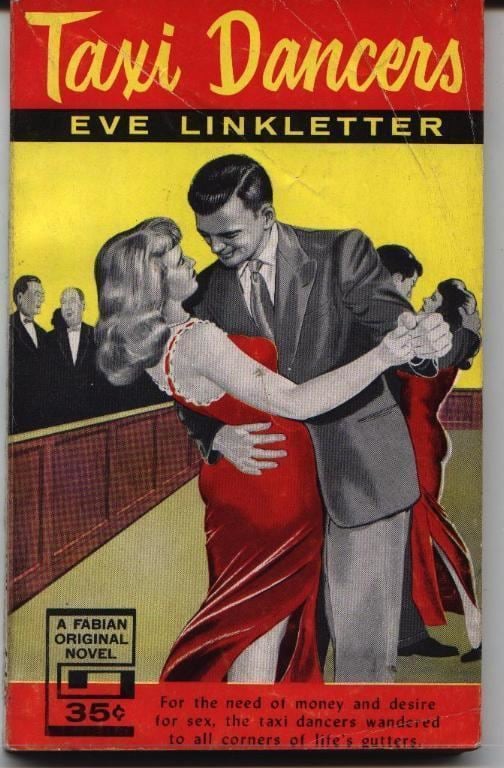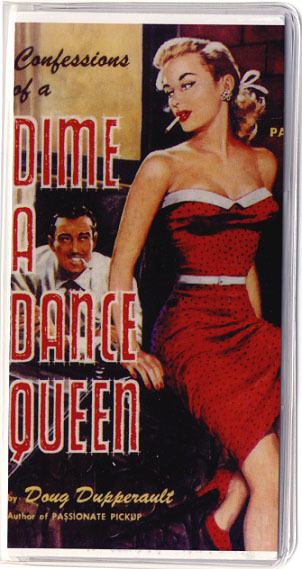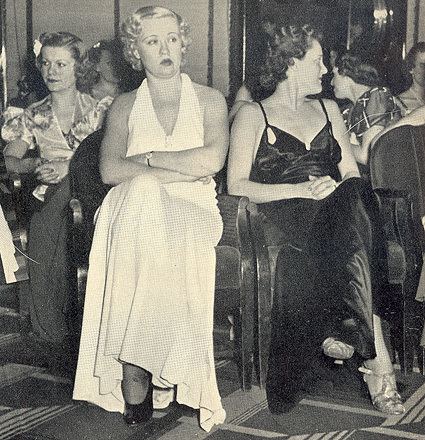 | ||
A taxi dancer is a paid dance partner in a partner dance. Taxi dancers are hired to dance with their customers on a dance-by-dance basis. When taxi dancing first appeared in taxi-dance halls during early 20th-century America, male patrons would buy dance tickets for ten cents each. When a patron presented a ticket to a chosen taxi dancer, she would dance with him for the length of a single song. The taxi dancers would earn a commission on every dance ticket earned. Though taxi dancing has for the most part disappeared in the United States, it is still practiced in some other countries.
Contents
- Taxi dancer john cougar
- Etymology
- History
- Taxi dancers today
- In the United States
- In Argentina
- In popular culture
- Film
- Television and radio
- Literature
- Song
- References

Taxi dancer john cougar
Etymology

The term "taxi dancer" comes from the fact that, as with a taxi-cab driver, the dancer's pay is proportional to the time he or she spends dancing with the customer. Patrons in a taxi-dance hall typically purchased dance tickets for ten cents each, which gave rise to the term "dime-a-dance girl". Other names for a taxi dancer are "dance hostess", "taxi" (in Argentina), and "nickel hopper" because out of that dime they typically earned five cents.
History
The first descriptions of taxi dancing were documented as early as 1913 in San Francisco's Barbary Coast neighborhood. At the time, the ticket-a-dance system operated in what were called closed dance halls, because female customers were not allowed — the only women permitted in these halls were the dancing female employees.

Taxi dancing then spread to Chicago where dance academies began to adopt the ticket-a-dance system for their students. This system was so popular at dance academies, that taxi dancing quickly spread to an increasing number of non-instructional taxi dance halls. Taxi dancing's popularity peaked in the 1920s as scores of taxi dance halls opened in Chicago, New York, and other major cities. At that time, the taxi dance hall surpassed the public ballroom in becoming the most popular place for urban dancing.

The ticket-a-dance system was the centerpiece of the taxi dance hall where the taxi dancers worked. Taxi dancers typically received half of the ticket price as salary and the other half paid for the orchestra, dance hall, and operating expenses. Although they only worked a few hours a night, they frequently made two to three times the salary of a woman working in a factory or a store.
Various films and novels chronicled the lives of taxi dancers. For example, in 1927 Joan Crawford starred in the film The Taxi Dancer, and actor Ed Wynn starred in the Ziegfeld Broadway musical Simple Simon, which popularized the song "Ten Cents a Dance", which in turn inspired the 1931 film Ten Cents a Dance, starring Barbara Stanwyck.
After World War II the popularity of taxi dancing in the United States began to diminish, and most of its taxi-dance halls disappeared by the 1960s.
Taxi dancers today
Taxi dancers may dance among paying customers to raise the standard or dance among the beginners to encourage them to continue learning. In the latter situation, taxi dancers often provide their services, without pay, with the general goal of building the dance community.
In social settings and social forms of dance, a partner wanting constructive feedback from a taxi dancer must explicitly request it. As the taxi dancer's role is primarily social, she is unlikely to criticize her partner directly. Due to the increased profile of partner dances during the 2000s, taxi dancing has become more common in settings where partners are in short supply, involving male and female dancers. For example, male dancers are often employed on cruise ships to dance with single female passengers. Taxi dancers (male and female) are also available for hire in Vienna, Austria, where dozens of formal balls are held each year.
Volunteer taxi dancers (experienced male and female dancers) are used in dance styles such as Ceroc to help beginners.
In the United States
Paying to dance with a female employee is available in some nightclubs of the United States, including many in Los Angeles. These clubs no longer use the ticket-a-dance system, but have time-clocks and punch-cards that allow the patron to pay for the dancer's time by the hour. Some of these modern dance clubs operate in buildings where taxi dancing was done in the early 20th century. No longer called taxi-dance halls, these latter-day establishments are now called hostess clubs.
For official purposes, in the United States their occupation was sometimes referred to as a 'dancer', when they worked in taxi-dance halls that had all the necessary business permits. But there were some professional secretaries who were moonlighting and legally worked part-time as a dancer.
In Argentina
The growth of tango tourism in Buenos Aires, Argentina, has led to an increase in formal and informal taxi dancing services in the milongas, or dance halls. While some operators are trying to sell holiday romance, reputable tango taxi agencies offer genuine services to tourists who find it hard to cope with the cabeceo—eye contact and nodding—method of finding a dance partner.
In popular culture
References to taxi dancers and taxi dancing in contemporary culture include:
